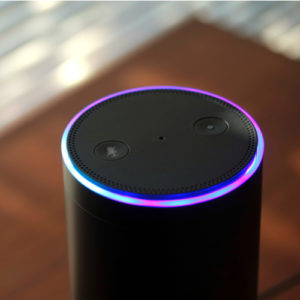
Introduction to traditional demand sensing
Traditional demand sensing uses the point of sale (POS) data from retail stores to understand the actual demand from end customers. POS data is a very well-established method of demand sensing. Another method for demand sensing is the market buzz. For example; the comments section of different websites, queries, and emails on online forums, activity on social media and online search on websites and search engines like Google.
How can demand sensing be linked to forecasting accuracy?
Demand sensing helps us identify the actual customer order trends and helps us improve the near-term forecast. Strategic actions like demand shaping for knowingly increasing or decreasing the demand for the product can be undertaken by sensing demand signals. Early warnings can also be generated to identify forecast errors and adjust the short-term forecast (refer to the image below).

Traditional Demand Sensing
- Using POS, market buzz, and other consumer-facing data, companies try to improve the demand signal available to them by increasing forecast accuracy and reducing inventory levels.
- Two main reasons:
- To improve near terms forecasts and if demand shaping is needed
- To create early warning for forecast errors
6 Ways You Can Improve Forecast Accuracy with Demand Sensing
Effective application of demand sensing can help reduce short-term forecast errors by up to 40 to 50 percent and increase inventory accuracy by up to 15 to 20 percent. And for wide distribution networks, in-transit inventory can be re-positioned, and regional inventory can be re-balanced to optimize the inventory distribution as per regional demands. Below are some of the methods to effectively use demand sensing to improve your forecast accuracy.
1. Use point of sale customer order data for short-term forecasting
Point of sale data at retail stores is the most established method of demand sensing. POS data has vital real-time information like the product sold, quantity, date and time, region, etc. Consolidated POS data can be compared to short-term forecast and deviation beyond the agreed norms can be used to adjust the short-term forecast.
2. Analyze order history to sense demand for B2B manufacturers
While point of sale data is valuable in improving the demand signal at the tail end of the supply chain, for manufacturers further removed from the point of sale or end customer, inventory buffers along the supply chain tend to make POS data unreliable. For the upstream manufacturer, improving forecast accuracy with demand sensing techniques is often achieved by analyzing historical data including, sales history, open order history, as well as current open orders.
3. Track macroeconomic indicators to improve forecasts
Many industries are directly affected by macroeconomic indicators like gross domestic product, overall stock market, employment data and housing sales data. Major movements of these macroeconomic indicators can be linked to change in end customer demand. Proactive steps can be taken to adjust the short-term forecast to avoid missed customer orders or excess inventories.
4. Track competitor promotional offers
One can be caught unexpectedly by last-minute promotional offers and discounts by a competitor. Most companies will have little or no time to react to such situations. Marketers can predict the impact in sales due to such competitor moves and adjust the sales forecast accordingly.
[Read More: 7 Things You Must Know About Demand Sensing]5. Take advantage of competitor stock outs by repositioning inventory.
A competitor can face sustained stock out situations due to raw material shortages, quality problems, production breakdowns, etc. During such phase, their demand shifts to alternative products available on the shelf. Regional inventories can be re-positioned to cater to this unexpected demand and production can be increased for the short term.
6. Adjust forecasts for changes in weather and natural calamities
Many industries are seasonal and directly affected by weather conditions. Early onset or withdrawal of certain weather conditions directly affect the sales of the product. Natural calamities also affect sales of many products. Adjustment in the short-term sales forecast, raw material procurement, production plan and distribution plans can be adjusted according to the end customer demand.
Demand sensing is generated from large volumes of structured and unstructured big data. This data is so large that it’s impossible to process and analyze the data with traditional tools and techniques. Also, expertise is required to collect, sense, interpret and represent the data for effective implementation. Contact us to get started with your demand sensing initiatives.
Enjoyed this post? Subscribe or follow Arkieva on Linkedin, Twitter, and Facebook for blog updates.





